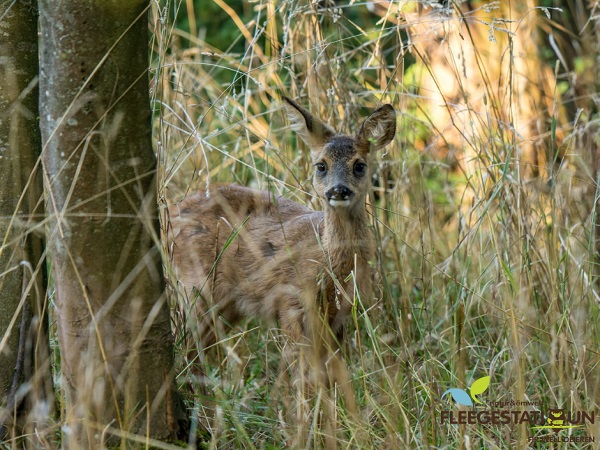 A fawn on the lookout hidden among tall grasses;
Credit: © Centre de Soins
A fawn on the lookout hidden among tall grasses;
Credit: © Centre de Soins
In the second of a series of articles about current conservation issues, experts at natur&ëmwelt asbl, a leading nature conservation NGO in Luxembourg, spoke to Chronicle.lu about their wildlife rescue centre and the upcoming busy spring season.
Natur&ëmwelt volunteer Claire Schroeder helped gather the relevant information from the NGO for this article.
The arrival of spring means just one thing for the staff and volunteers of the natur&ëmwelt Centre de Soins pour la faune sauvage asbl (wildlife rescue centre) in Dudelange - the high season is coming.
Chronicle.lu: What exactly is the role of the wildlife rescue centre?
Natur&ëmwelt: The wildlife rescue centre was founded in 1988 as part of the natur&ëmwelt family. Initially taking in just under 200 animals a year, the main role of the centre has remained wildlife rehabilitation - the centre provides professional care to poorly, injured or orphaned wild animals so that they can eventually return to their natural habitat. A stand-alone asbl since 2020, the wildlife rescue centre now cares for about 4,000 animals a year of which most are birds, about a quarter are mammals and a few are reptiles.
Chronicle.lu: We are coming up to the rescue centre’s busiest season - why is that?
Natur&ëmwelt: With spring rolling in and the temperatures rising, many mammals are welcoming their little ones into the world. As these newborns are very vulnerable during this time, well-meaning individuals will often pick them up and bring them to the rescue centre. In many cases, though, this can do more harm than good.
Chronicle.lu: How can we tell the difference between a mammal that needs help and one that does not?
Natur&ëmwelt: For starters, it is helpful to have some knowledge about how some common mammals behave when raising their young. Deer and hares will leave their little ones alone and hidden, in order to not attract predators with their scent. The mother will return a few times a day to feed her babies. A lone fawn or leveret is most likely not orphaned and touching it (inadvertently leaving a scent) can radically decrease its chance of survival. Fox cubs are born around March or April and will begin to leave the burrow at around four to five weeks old. A lone fox cub is usually just exploring and will return to its mother and siblings on its own. Generally speaking, only if a young animal is obviously wounded (blood or fly larvae), crying for long periods of time, or the mother has passed, does it need help.
Chronicle.lu: What about young birds?
Natur&ëmwelt: Most young birds will leave their nests a few days before they are fully fledged. During this time, they may hop around on the ground while they learn to fly and their parents will continue to feed them. If a bird is still very young, i.e. not hopping around or naked, it can be returned to the nest.
Chronicle.lu: What if we find a young animal that is in need?
Natur&ëmwelt: If possible, place them in a cage, cardboard or plastic box with holes to allow them to breathe and bring them to the wildlife rescue centre in Dudelange. Alternatively, there are four drop-off stations open 24/7 across the country - in Clervaux, Niederfeulen, Junglinster and on site in Dudelange. If transporting an animal yourself is not feasible, drop the rescue centre a call and a volunteer will come pick the animal up.
Chronicle.lu: How can we learn more?
Natur&ëmwelt: Come along to natur&ëmwelt’s open meeting on 30 March on this topic. Or better yet, learn hands on and make a difference while doing it - become a volunteer! More information can be found online on our website and social media platforms.








